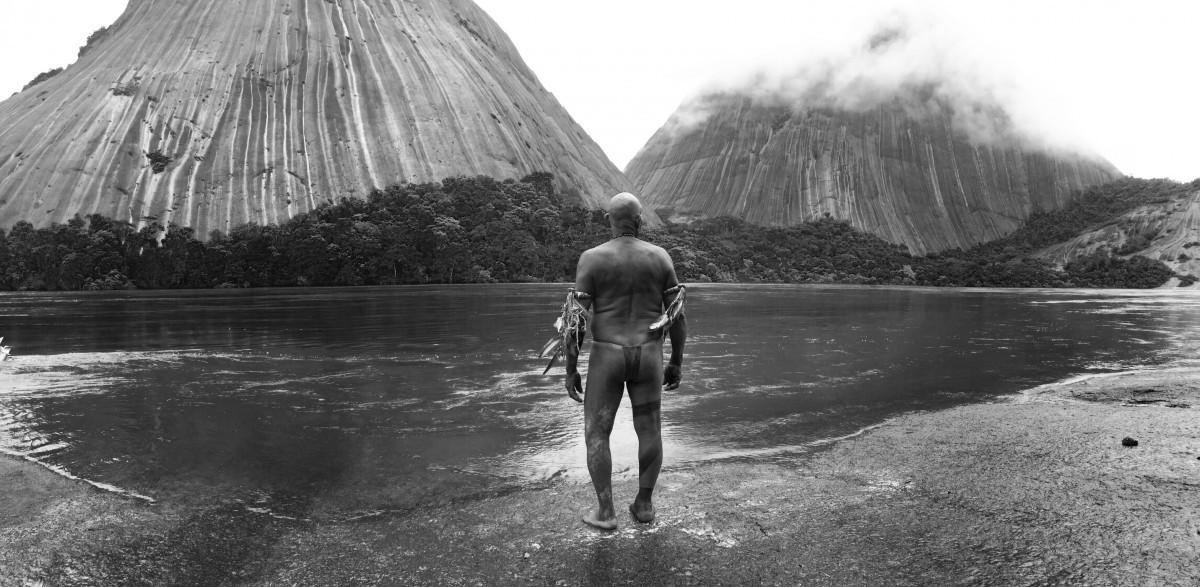Embrace of the Serpent leads you on an exploration of Indigenous civilization
Deep in the Amazonian jungle is a people who were brought to Earth on a giant anaconda that descended from the Milky Way. At least, there used to be, until there was no one else to tell the tale to, and it was forgotten. Embrace of the Serpent invites you into a vivid dream from a culture that has been allowed to go extinct. It’s like finding an old photograph, wishing you could step into it to learn its mysteries, and then being able to do so.

In the early 20th century, a shaman named Karamakate (played by Nilbio Torres and Antonio Bolivar), who is the last of his kind, accompanies two scientists, one German and the other American, on their separate quests for a sacred plant. The two stories, inspired by the scientists’ actual journals, are set thirty years apart, but you wouldn’t know; there’s no sense of time in the jungle, only a feeling of eternity and vastness of space. To call their journey an adventure would be misleading—it’s much more of an exploration, and it goes deeper than the literal jungle.
It’s an exploration into a culture that has continuously remained hidden. You can hardly apply Western values to this world, and what’s more, you wouldn’t want to; to see your own identity imposed on these people is revolting and sad. While colonialism is not the film’s only focus, it is shown how civilizations clash when they come in contact, as one, perhaps inevitably, suppresses the other.
A memorable scene involves the German scientist, known as Theo (Jan Bijvoet), showing a compass to the members of a tribe and then realizing his grave mistake. They refuse to give it back; Theo is dismayed, as their original knowledge based mostly on astronomy will now be lost. Other, more extreme situations involve the rubber trade and the Catholic church, as the characters encounter a tyrannical priest who bans Indigenous children from speaking their birth languages, and a psychotic self-proclaimed messiah that recalls Apocalypse Now.
The film makes no attempt to entertain or deliver a traditional narrative and yet is effortlessly awe-inspiring, filming the jungle the way you would film a church. No set can possibly compare to the real thing, and there’s no doubt at any point that it was shot on location, which makes the director’s control over image all the more impressive.
It’s eerily quiet and restrained, and you could even say unemotional, but then you wouldn’t know how to judge. When has Amazonian culture ever been portrayed with such utmost respect and wonderment? How often has a film taken an Amazonian perspective at all, and not just exploited it for its exotic qualities? There is a strangeness to it all, a captivating otherness that will speak to anyone interested in Latin American magical realism.
Only 16 people remember the language spoken by the main characters. The Colombian director, Ciro Guerra, has said in several interviews that the Indigenous people he cast were the only ones he could get, simply because there are so few of them left. Does a falling tree in a forest make a sound if there’s no one to hear it? Does a dying civilization? As long as such films will be made, the answer will be yes.
Release date: March 11, 2016
Directed by: Ciro Guerra
Starring: Nilbio Torres, Jan Bijvoet, Antonio Bolivar, Brionne Davis
Stars: 4
125 minutes



